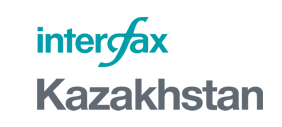Chairperson of the KASE Management Board Alina ALDAMBERGEN:
THE TRANSFER OF PENSION ASSETS MANAGEMENT TO PRIVATE COMPANIES WILL HELP INCREASE MARKET LIQUIDITY

Early this year the Moscow Exchange (MOEX) acquired a 3.32% stake in the Kazakhstan Stock Exchange (KASE). Alina ALDAMBERGEN, chairperson of the KASE Management Board, talked in an interview with Interfax-Kazakhstan about the results of cooperation with the exchange and plans to create a central counterparty (CCP) institution. She also shared her opinion with the news agency on the reasons for the unpopularity of Kazakhstan’s market among international investors.
- Alina Utemisovna, as it is known, in May the KASE adopted a development strategy for 2019-2021. What are the main objectives and goals of the new strategy?
- The main goal of the exchange is to maintain the KASE's leading position across the Central Asian region's [stock] exchange space. The four key areas have been identified for the next three years: IT modernization of trading and clearing systems (TCS) and related information systems, launch of the central counterparty (CCP) services all over exchange markets in order to guarantee the stock exchange transaction settlement completion, increase of stock exchange market liquidity by attracting new participants, introduction of a wider range of financial tools and use of new technologies, as well as introduction of sustainable development principles with the aim of increasing the stock exchange investment appeal.
With the aim of achieving objectives set forth, a number of activities within the framework of strategic cooperation with the MOEX have been put forward.
- What are the first results of cooperation with the MOEX?
- In October last year we signed an agreement on strategic cooperation. The agreement is aimed primarily at the acquisition of the MOEX trading and clearing systems (TCS), participation in the stock exchange development strategy, as well as the CCP launch in the KASE markets. Right now the implementation of these objectives is actively being pursued. The exchange is holding a number of events aimed at familiarizing customers with upcoming legislative, technology and technical changes. These are meetings, webinars and presentations related to the clarification of new trading modes, types of trading tools, repo transactions with CCP, technical interaction with the MOEX TCS and so on.
As part of the outreach efforts, in April 2019, the KASE organized a meeting between Kazakhstan’s professional participants and the MOEX in Moscow, where our clients - banks and brokerage companies - were presented with detailed information about services, tools and technological traits of the MOEX trading system activity. We are preparing to submit new TCS to market participants for testing by the end of July.
In general, the TCS launch in the stock and money markets will be carried out in two stages: the first one - in October this year, and the second one in January next year. Initially, liquid financial tools will be transferred to the new trading system [TCS]. Simultaneously it is planned to introduce the CCP functionality into the stock market. Earlier, in September 2018, we launched CCP in the foreign exchange market.
- What stake will remain with the National Bank after completion of the deal with the MOEX?
- In January 2019, MOEX bought out 3.32% of the KASE's placed shares. The deal's second phase is expected to complete by the end of this year. The exact number of shares that the MOEX will acquire will be determined by the results of the placement. Accordingly, the stake of the National Bank will decrease proportionally. In the previous placement, the stake of the National Bank decreased from 50.1% to 49.1%, that is, by 1%. If the MOEX continues to increase its stake in the KASE, the stake of the National Bank, therefore, will keep dropping.
- You mentioned the implementation of the CCP functionality in the stock market. Talk through these plans.
- In the 4th quarter of this year, we will launch the CCP services in the liquid stock market, Eurobonds and in transactions with depositary receipts. In the 1st quarter of next year, the CCP services will be offered across all other markets and tools.
The CCP introduction will help reduce transaction costs of participants and provide them with certain comfort, since the transaction settlement is guaranteed by a highly reliable financial institution. To this end, we hope for the liquidity boost and the interest increase, and attraction of new Kazakhstani and foreign investors.
- One year has passed by since the official opening of the AIFC. What conclusions, in your opinion, can be made about teamwork or competition between the two exchanges?
- The KASE in its activities is guided by Kazakhstan’s legislation within the framework of state regulation of the financial market and financial organizations. The Astana International Financial Center (AIFC) exchange acts in the interests of the AIFC development, in line with the jurisdiction of English law, that is, other legislative norms.
The AIFC exchange does not work, like the KASE, within the legal field, which includes Kazakhstan’s legislation on the securities market. The AIX Exchange was created by the financial center, which, in fact, features an offshore zone.
In practice, of course, the flow of money from investors, issuers or professional participants between exchanges may occur. Any Kazakhstan’s issuer has the opportunity to place its securities both on Kazakhstan’s platform and on the foreign one. Thus, if the AIFC regulations allows, then it can also issue tools on the AIX. The situation is similar regarding brokers. Any broker - a member of our exchange, if this is prescribed by regulations, can also become a member of another exchange or participate in trading using other tools abroad. As far as we understand, the AIFC legislation allows them [the KASE brokers] to become members of the AIX. In a nutshell, it all depends on the legal regulations that apply to these exchanges and on the list of tools available for trading.
Currently, the KASE product line includes stocks, bonds, GDRs, mutual investment funds, ETFs for the KASE index, repo, futures and currency swaps. There are a total of more than 850 tools from 200 issuers. Fifty-two participants are active on the KASE platform, three of them are non-residents. The Kazakhstan Stock Exchange is an integral part of financial infrastructure and can provide new opportunities for increasing liquidity in the financial market in collaboration with CCP services.
For the time being only shares, bonds and GDRs are traded on the AIX exchange — a total of 25 tools issued by 14 issuers. 18 participants are AIX members, of them 15 are Kazakhstan-based.
- How do you assess the AIFC activities ? Is it possible to talk about success? What, in your opinion, is the assessment of the AIFC capabilities in terms of implementing one of the main objectives set before it - to ensure the foreign capital flow into the country?
- The local stock market infrastructure built over 25 years will continue to function and develop in order to meet the needs of Kazakhstan’s companies in terms of financing and asset management tools, and also serves as an effective system for redistribution of the country's domestic financial resources. The KASE positions itself as a locally organized market, primarily for Kazakhstan-based financial entities and securities issuers, where the redistribution of tenge liquidity from investors to securities issuers and among Kazakhstan’s financial institutions is carried out. I believe that the AIFC should focus its efforts on enhancing Kazakhstan’s competitive position in terms of increasing the foreign capital flow into the country alongside the other international financial centers. The future the AIFC exchange is seen as a competitor for foreign stock exchanges, such as the London Stock Exchange (LSE) and the Hong Kong Stock Exchange (HKEX), where large Kazakhstan’s companies, attractive in terms of investments, prefer to go for in quest of opportunities to attract international investors on favorable terms.
That is, it would be possible to assess the AIFC success later on, and, we hope, not only by “dry positions” in the ratings, but also by actual volumes of attracted foreign capital, including money volumes from private investors, as well as by the number of the AIFC participants, and in the fist place, international management companies and investment banks.
It is understandable that we have been working for a long time, while the AIX for about a year. But in any case, our results are currently incompatible to compare. In addition to the legal field, the exchanges have different scopes and roles in the economy.
- Has the current political situation in Kazakhstan influenced the KASE activity?
- We do not see this in Kazakhstan’s market. The macroeconomic situation in the country remains stable, as well as the foreign exchange currency rates. The KASE index showed a small change in the first 6 months - 5 shares rose, and 2 showed a decrease out of 7 liquid shares of the index. But here, objective fundamental factors related to the activities of companies, their corporate history, and the attractiveness of the currency of investment impact the stock prices. For example, for the first 6 months KazMinerals’ shares increased by 17%, Halyk Bank up by 16%, Kcell up by 10.79%, Bank CenterCredit up by 3.5%, KEGOC up by 0.83%. This means that companies have shown sustainable development and positive operating performance.
We see a decrease on KazTransOil and Kazakhtelecom, respectively, of 20% and 27.7%. In this situation, one needs to understand that Kazakhtelecom, firstly, since the beginning of the year has faced a certain situation with its minority shareholders, secondly, the amount of debt load and issues related to the acquisition of a new company have affected [75% of Kcell JSC ].
On KazTransOil- there were issues with the amount of dividend payments, and also an external factor had an impact - the Russian Druzhba pipeline oil pollution.
I underscore that the KASE index is considered as a local benchmark of investor sentiments. Its growth or decline also indicates a tendency to invest money in Kazakhstan’s tenge assets at one time or another. Thus, it [ the KASE index ] is essentially an investor confidence scale in terms of positive growth prospects of Kazakhstan’s economy, indirectly through the corporate history of issuers and the devaluation expectations of investors regarding the national currency.
As for foreign capital, it is present on the KASE, and here are very different dynamics in terms of tools. Government securities remain attractive, with non-resident participation of about 3%. However, it is premature to say that our market is popular with international investors. And there is an explanation for this factor. There is weak coverage of Kazakhstan’s stock market in international publications among them [investors] , high competition in terms of profitability indicators [compared to] other emerging markets, low liquidity and a small amount of securities in free circulation. In order to trigger the long-term interest of international investors, and not just the desire for speculative gains, it is necessary for the National Bank of Kazakhstan and the government to conduct joint reforms to further develop the stock market.
Kazakhstan has all concepts for the stock market successful development and the foreign capital inflow due to the long period of maintaining high long-term and short-term sovereign credit ratings, the pool of reliable and profitable companies in the corporate sector, the application of tax incentives to the income received by non-residents in the stock market, the use of the settlement scheme T + 2 and the setttlement launch in US dollars. However, a number of technical issues in connection of the international depositary (Euroclear) still need to be finalized in order to allow foreign investors' to get access to perform the stock market transactions directly or through an authorized broker / investment bank.
If to talk in detail in figures about the participation of non-residents in the KASE stock market, in the first half of 2019 the volume of non-residents' transactions with shares amounted to 18.5 billion tenge or 23.7% of the total gross turnover of the secondary market (exclusive of major irregular transactions). In 2018, the volume of transactions of non-residents on the KASE stock market reached 19.8 billion tenge or 10.5% of the total gross turnover (exclusive of major irregular transactions). In 2017, the share of non-residents was estimated at 12.2 billion tenge, which accounted only for 5.1% of gross turnover.
In the corporate bond market in the first half of 2019 the relative participation rate was maintained but the absolute [rate] was growing. The share of participation of non-residents was at 1.2% of gross turnover or 18.5 billion tenge. In 2018, the share of non-residents also amounted to 1.2% of gross turnover to 12.6 billion tenge in monetary terms. In 2017, the figure was somewhere in the middle around 2.3% or 15.4 billion tenge.
This year, the participation of non-residents in the government securities market edged down to 0.1% or 744.6 million tenge of gross turnover. This fact is related, in general, to a reduction in the volume of trading in the National Bank of Kazakhstan's bonds, and, as a result, in a decline in trading volumes in the secondary government securities market. In 2018 the government securities market saw an absolute increase in the trading volume of non-residents compared to 2017 - 23.2 billion tenge against 19.3 billion tenge. However, in relative terms, the share of non-residents in 2018 decreased from 1.7% to 1%. Monetary growth in the participation of non-residents in the secondary government securities market in 2017-2018 was primarily due to an increase in the share of trading in National Bank's bonds in the secondary market, which amounted to 85.5% of the total trading volume in 2018 versus 79.9% in 2017.
- Now the Kazakh currency has absolutely lost correlation with oil prices and the ruble. Because of what is this happening? How do you think, is the tenge adequately rated at the moment?
- According to the half-year results, we see that, firstly, the tenge slightly devalued (about 1%) whereas trading volumes in the foreign exchange market decreased by 14% to 5.68 trillion tenge in the 6 months compared to the same period last year. I note that the exchange should organize trading. And thereafter the counterparties set the forex rates based on supply and demand.
- What can be done to develop the domestic stock market?
- Despite significant successes, Kazakhstan's securities market is characterized by controversial trends. In terms of its development, it is not lagging behind but even overtakes the needs of the domestic economy and contributes to its sustainable growth. The overall stock and bond trading dynamics are positive.
Generally speaking, the volume of trading on the exchange for the first 6 months amounted to 62.3 trillion tenge, a slight decrease of 3.9% compared to the 6 months of 2018. The securities market volume increased by 109.9% or 110%. The volume decreased in the money market by 5.7% and down by 14% in the foreign exchange market.
It’s necessary to understand that a significant increment in the securities market was due to the primary bond placements: corporate bonds, bonds of international financial organizations, of the Ministry of Finance. And all this indicates that the exchange is effectively being used as a platform for financing.
What is needed in order to develop the market further? It is necessary to increase the liquidity levels, increase the number of participants, attract foreign participants, expand opportunities for institutional investors, continue to create conditions for companies to enter the market. But this is work that depends not only on us as a stock exchange. If to look at in comparison with other stock exchanges, then in terms of infrastructure development, we are even ahead of some emerging markets, as we provide the entire chain of pre-trade, trade and post-trade services. The risk management system is constantly improving. As I said above - the CCS structure was introduced, which creates completely the new level of comfort and safety for the participants. To improve conveniences for trading, multicurrency quotations have been implemented, settlement is carried out in tenge and in US dollars at different times (T + 0, T + 1, T + 2, T + n). The tools line includes not only classical investment tools, such as shares and bonds, but also structured tools: ETFs and mutual funds, hedging tools and liquidity management: swaps, repos. In addition, the KASE also implements a number of information and outreach projects to increase investment culture and financial literacy in the stock market field.
At the same time definitely there are factors hindering the stock market development. With the help of high-quality infrastructure upgrade it is possible to reach the new level of depth and market liquidity. In this case we are talking about systemic issues. For example, in Kazakhstan, one major investor is the Unified Accumulative Pension Fund (UAPF). If the pension assets management is transferred to several companies in the future, this will help develop the industry of management companies, increase the market liquidity and provide various investment strategies for depositors. However, this requires legislative changes.
Kazakhstan's market has a lot to overcome to achieve success with regard to the stock market international classifications such as FTSE, MSCI and S & P. These ratings are an indicator for international investors, reflecting the degree of the stock market development and the level of risks for participation. For over three years Kazakhstan has had the frontier rating from MSCI and S & P. In September 2017, Kazakhstan received the same status from FTSE. Further domestic market status upgrade to the emerging rating will make it possible to attract foreign investors much more effectively, which is impossible without taking measures to improve further regulations and increase the stock market liquidity.
The National Bank, the Ministry of Finance and the KASE carried out necessary work to build a risk-free yield curve for the domestic government securities market as the determining factor for pricing the stock market. Money market rates are balanced within the base rate band. The regulator shapes price expectations in the financial market. Thus, conditions have been created for corporate borrowing growth at rates objectively competing with the banking sector lending rates.
However, if previously the main channel for financing the economy was the banking sector, now the stock market competes more with state support programs that are financed through second tier banks at rates lower than market rates, which make the open market capital attraction relatively unattractive.
- How much was the volume of trading in shares on KASE for the first half year?
- The volume of trading in shares in the first half of 2019 amounted to 47.6 billion tenge and decreased by 49.6% or 46.8 billion tenge compared to the same period of 2018. Such a significant decline was triggered the large volume of transactions of irregular nature in the first half of 2018. A total of 51,607 transactions were concluded in this market segment.
In the first half of the year, such companies showed growth in terms of capitalization as KazMinerals PLC (+ 22.47%), Halyk Bank (+ 15.60%), Forte Bank (+ 60%). In general, capitalization of the stock market from the beginning of the year increased by 1.9% (+ 2.1% in dollar terms) or 295 billion tenge ($ 839.8 million) to 15.8 trillion tenge ($ 41.5 billion).
- What main indicators do you expect in the next half-year?
- We believe that the situation will remain flat until the end of the year. In the securities market this year we expect an increase in trading volume due to the growth of the corporate bonds and government bonds primary market. Thanks to the established interest rate channel and well-established pool of institutional investors, [fund] attracting for companies especially with high credit ratings (second tier banks, quasi-public companies) in the open corporate debt market has been a convenient and fast way to replenish assets in the past two years.
In the repo and currency swap market this year, we think there will be a slight decrease in trading volume, which is due to the low demand from second tier banks for tenge assets, which was noted in previous years. Monetary conditions remain neutral. The base rate in real terms is at a level that maintains inflation within the target band of 4–6% at the 2019–2020 forecast horizon, however, there are some risks that the indicator would go beyond the upper limit of the band due to an increase in social budget payments, household income growth and as a result, retail lending growth. Further balance of risks shifts towards a higher rate development pathway.
- Thank you for the interview!
July, 2019
© 2024 Interfax-Kazakhstan news agency
Copying and use of these materials without reference to the source is prohibited
Archive






